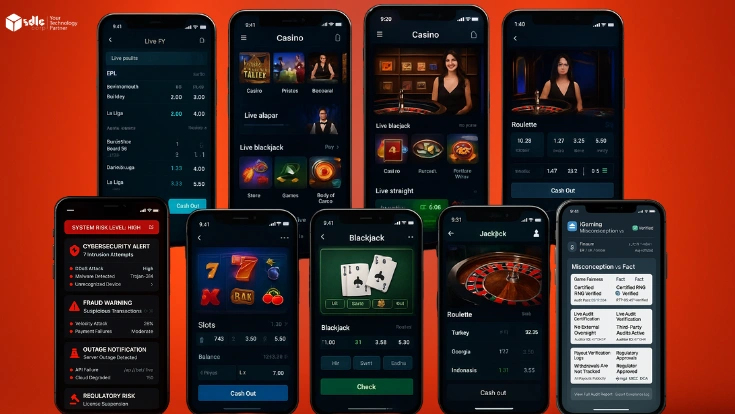In the ever-evolving world of gaming, cozy games have emerged as a popular genre, offering players a unique blend of low-stress gameplay and immersive, high-enjoyment experiences. These games focus on relaxation, creativity, and personal expression, which is why their development requires careful optimization to ensure smooth performance without compromising the calming atmosphere they aim to deliver. Whether you’re a Game Development Company venturing into this genre or looking to incorporate elements of Blockchain Game Development Services, understanding how to enhance performance is crucial for creating seamless and enjoyable player experiences.
This blog delves into the core strategies for optimizing cozy games for both player satisfaction and technical performance. We’ll discuss key aspects of cozy game mechanics, how to leverage hardware and software capabilities, and specific ways to boost the overall experience without increasing stress on the player or their gaming systems.
Start Crafting Your Own Cozy Game with Expert Development Services Today!
Our expert team is here to guide you every step of the way.

Understanding the Core of Cozy Games
At the heart of cozy games are their core elements, which include:
- Simple Mechanics: Cozy games often have straightforward gameplay mechanics, such as farming, crafting, exploration, and character interactions. These games are usually designed to offer an intuitive learning curve and minimal time pressure, encouraging a leisurely pace.
- Calming Aesthetic and Atmosphere: Aesthetics play a key role in cozy games. Vibrant, warm colors, soft soundscapes, and gentle animations all contribute to an overall relaxing environment.
- Slow Progression and Open-Ended Gameplay: Cozy games tend to have a slower progression and open-ended gameplay, allowing players to take their time exploring, crafting, and building their in-game worlds without feeling rushed. This invites a sense of personal agency.
While these components are simple at their core, optimizing the game’s performance involves ensuring that the mechanics and aesthetic elements run smoothly on a variety of hardware configurations without adding unnecessary complexity.
Optimizing Game Engines for Cozy Game Development
The choice of game engine plays a vital role in cozy game performance. Developers must select engines that support both 2D and 3D graphics, have excellent optimization capabilities, and allow for the implementation of cozy aesthetics. Two of the most popular engines for cozy games are Unity and Unreal Engine.
- Unity: With its vast asset store and support for lightweight games, Unity is a popular choice for cozy game development. Its efficient memory management and ease of use make it ideal for games with minimal graphical complexity but rich interactive experiences.
- Unreal Engine: Unreal Engine provides advanced graphic optimization options, making it suitable for 3D cozy games that require more detailed environments. With powerful tools for performance profiling, Unreal can help developers fine-tune game assets and create visually stunning yet low-stress gaming experiences.
Both engines provide a variety of optimization techniques, including dynamic scaling, object pooling, and the ability to adjust frame rates to ensure that gameplay remains smooth, even on lower-end devices.
Leveraging GPU and CPU Power Efficiently
Cozy games, while visually appealing, don’t require the intense computational power needed for high-action or photo-realistic games. However, the game should still be optimized to avoid unnecessary strain on the CPU and GPU. Here are a few tips to optimize these resources:
- Optimized Asset Loading: Managing how assets (such as textures, sounds, and 3D models) are loaded and unloaded during gameplay is crucial for smooth performance. Techniques such as asynchronous loading and asset streaming can help in optimizing resource management without interrupting gameplay.
- Efficient Rendering: Since cozy games often focus on visually rich and relaxing environments, rendering optimization is key. Developers can use techniques like level-of-detail (LOD) scaling, which dynamically adjusts the quality of 3D models based on the player’s distance from them. Additionally, occlusion culling can reduce the number of objects rendered, improving performance.
- CPU Load Balancing: Efficient multi-threading can significantly reduce CPU stress. By distributing tasks such as physics calculations, asset loading, and game logic across multiple CPU cores, developers can ensure smoother gameplay without lag or frame drops.
- Frame Rate Optimization: Cozy games don’t typically require high frame rates, as the gameplay is not action-heavy. Reducing frame rates to a steady 30 FPS instead of aiming for 60 FPS can significantly reduce hardware strain while maintaining a smooth, enjoyable experience for the player.
Streamlining User Interfaces (UI)
User interfaces in cozy games should be simple, accessible, and intuitive. A cluttered or poorly optimized UI can detract from the low-stress experience that cozy games aim to deliver. Here are some key factors to consider when designing UIs for performance optimization:
- Minimizing Draw Calls: Too many individual draw calls can slow down performance, especially on mobile platforms. Combining UI elements into a single batch or using sprite atlases can reduce draw calls, improving both the frame rate and responsiveness of the game.
- Responsive Inputs: Laggy or delayed UI interactions can cause frustration, breaking the calm atmosphere of cozy games. Ensuring responsive controls through event-driven programming and minimizing input latency is essential for maintaining a low-stress experience.
- Lightweight Animations: Gentle, subtle animations are a hallmark of cozy game interfaces, but they can be performance-heavy if not optimized. Utilizing keyframe reduction, simplifying animation curves, and limiting the number of concurrent animations can help maintain performance without sacrificing the charm of the game.
Optimizing for Mobile and Low-End Devices
Given the popularity of mobile gaming, cozy games must be optimized to run smoothly on a wide variety of hardware, including low-end devices. Here are some strategies for mobile and low-end optimization:
- Lowering Texture Resolutions: Cozy games often rely on stylized, low-resolution textures that still look visually appealing. Reducing texture sizes without compromising too much on quality can significantly improve performance on mobile and older devices.
- Reducing Particle Effects: While cozy games don’t typically rely on explosive particle effects, they often include elements such as rain, snow, or fireflies that add to the atmosphere. Limiting the number of particle effects and optimizing them to only be active when in view can enhance performance.
- Optimizing Audio: Audio is an integral part of creating a soothing environment in cozy games. However, excessive audio files or improperly compressed audio can result in larger file sizes and increased loading times. By using compressed audio formats and dynamically loading sounds only when needed, developers can maintain both quality and performance.
- Efficient Memory Usage: Cozy games, while seemingly simple, can consume a lot of memory if poorly optimized. Efficient memory management involves freeing up unused assets from memory when not in use, reducing RAM usage, and ensuring that the game can run on a wide range of devices without lag.
Balancing Visual Fidelity with Performance
Cozy games thrive on their visual appeal, but performance must not be sacrificed in favor of graphics. Striking the right balance between visual fidelity and smooth gameplay is key:
- Post-Processing Optimization: Post-processing effects like bloom, ambient occlusion, and depth of field can enhance the visual experience but may come at a performance cost. Developers should use these effects sparingly and adjust their intensity based on the device’s capabilities.
- Adaptive Quality Settings: Implementing adaptive quality settings allows the game to adjust graphical settings automatically based on the hardware’s capabilities. This ensures a high-quality experience for players on high-end systems while maintaining smooth performance on lower-end ones.
- Simplified Shaders: Simplifying shaders and reducing the complexity of lighting calculations can help maintain the aesthetic of cozy games without demanding too much from the hardware. For example, using baked lighting rather than real-time lighting can save processing power.
Enhancing Player Experience Through Performance
Optimizing performance in cozy games is not just about improving frame rates or reducing loading times—it’s about enhancing the player’s overall experience. Here’s how:
- Minimal Load Times: Long load times can disrupt the immersive and relaxing experience cozy games are known for. Using techniques such as level streaming or scene pre-loading can ensure seamless transitions between game areas.
- Consistent Frame Rate: Sudden drops in frame rates can be jarring, pulling players out of the experience. Maintaining a consistent frame rate, even if it means lowering some graphical settings, is essential to providing a smooth and stress-free gameplay experience.
- Auto-Save Features: Implementing auto-save features ensures that players don’t lose progress, especially in games with open-ended or sandbox gameplay. Saving data asynchronously can prevent any lag or interruptions in gameplay.
- Accessibility Options: Cozy games appeal to a broad audience, including players who may not be familiar with complex game mechanics. Including accessibility options, such as customizable controls, subtitles, and adjustable difficulty levels, can help more players enjoy the experience.
Immersive cozy games with the right tools and game engines, and bring your relaxing game worlds to life effortlessly.

Conclusion
Optimizing cozy games for performance is a delicate balance of maintaining visual and auditory appeal while ensuring smooth, uninterrupted gameplay. Whether you’re an experienced Game Development Company or integrating blockchain technologies as part of Blockchain Game Development Services, these strategies can help deliver a high-quality, low-stress experience to players across a wide range of devices. By focusing on optimization, developers can ensure that cozy games continue to offer enjoyable, immersive, and relaxing experiences for players worldwide.

















